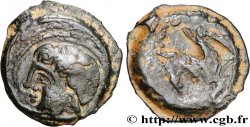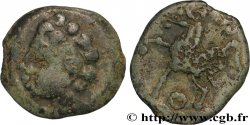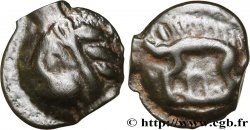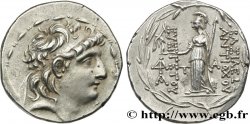Live auction - bga_344774 - GALLIA - ARVERNI (Area of Clermont-Ferrand) Statère d’or au nom de VERCINGETORIXS, type Id
Чтобы принять участие в торгах, вы должны войти в систему и стать подтвержденным участником аукциона. Войдите, чтобы сделать ставку. Ваш аккаунт будет подтвержден в течение 48 часов. Не ждите до закрытия торгов, чтобы зарегистрироваться.Сделав ставку на данный товар, вы вступаете в юридическое соглашение на покупку выбранного товара и нажатием кнопки «Сделать ставку» подтверждаете принятие вами условий интернет-аукционов cgb.fr.
Ставка может бить сделана только в полном эквиваленте евро. Торги закроются согласно времени, указанному в описании товара, все ставки, сделанные после закрытия торгов, учитываться не будут. Не следует откладывать предложение вашей ставки до последнего момента, так как система может не успеть обработать вашу заявку, и ваша ставка не будет принята. Более детальную информацию вы найдёте здесь: FAQ по интернет-аукционам.
Все ставки победителей подлежат комиссии 18%.
Все ставки победителей подлежат комиссии 18%.
| Оценить : | 50 000 € |
| Цена : | 52 000 € |
| Максимальная предлагаемая цена : | 52 000 € |
| Конец торгов : | 31 March 2015 14:57:31 |
| Участников : | 3 Участников |
Тип Statère d’or au nom de VERCINGETORIXS, type Id
Дата: 58-52 avant J.-C.
Металл: gold
Диаметр: 18,5 mm
Ориентация осей монеты: 8 h.
Вес: 7,44 g.
Редкость: R3
Комментарии о состоянии
Statère parfaitement identifiable, frappé sur un flan un peu court et ovale. Faiblesse de frappe sur la partie droite de l’avers et frappe un peu confuse au revers. Le métal est régulier et semble avoir été nettoyé anciennement, avec une agréable et très fine patine. De légères traces d’écrouissage au revers. Aspect homogène avec une faible usure ; une rayure est à signaler entre les jambes avant
Ссылки в каталоге: :
Происхождение:
Cet exemplaire provient d’une vieille collection ; il a été acquis à la fin des années 1970, lors d’une bourse aux collections à Bressuire (Deux-Sèvres)
Лицевая сторона
Аверс: легенда: VE[RCIN-GETORIXS].
Аверс: описание: Tête nue à gauche, la chevelure ondulée ; légende commençant devant le menton, se terminant derrière la nuque ; grènetis.
Обратная сторона
Реверс: легенда: ANÉPIGRAPHE.
Реверс: Описание: Cheval bondissant à droite, un croissant au-dessus de la croupe (et une amphore entre les jambes).
Комментарий
Ce statère appartient à la série monétaire gauloise la plus populaire, véritable symbole de la lutte du peuple gaulois contre l’envahisseur romain ! C’est un des rares exemple où le nom du personnage est connu par d’autres sources écrites.
Les statères de la série VERCINGETORIXS sont classés en Types ; I pour les avers à tête nue et II pour la tête casquée. Le type I se distingue selon que la chevelure est courte (Ia) ou longue (Ib, Ic et Id), selon les motifs du revers (une esse pour le type Ib et un croissant pour les type Ic (avec le cheval à gauche) et Id (avec le cheval à droite).
Notre exemplaire avec le revers à droite correspond au type Id, comme le BN. 3777. Les auteurs du Moneta recensent neuf exemplaires. Récemment, un exemplaire du même type a été vendu par S. Bourgey à 126.000€ frais compris.
Cette légende courte correspond à l’exemplaire de l’ANS provenant vraisemblablement de la collection Blancard de Marseille (cf. J.-B. Colbert-de-Beaulieu et G. Lefèvre).
Même coin de revers que le DT. 3601 D4/R3 (n° 108 du musée de Péronne).
Coin de droit proche du DT. 3600 (du musée Bargoin, associé à un revers à gauche avec l’esse).
This stater belongs to the most popular Gallic monetary series, a true symbol of the Gallic people's struggle against the Roman invader! It is one of the rare examples where the character's name is known from other written sources. The staters of the VERCINGETORIXS series are classified into Types; I for the bare-headed obverse and II for the helmeted head. Type I is distinguished by whether the hair is short (Ia) or long (Ib, Ic and Id), according to the reverse motifs (an esse for type Ib and a crescent for types Ic (with the horse on the left) and Id (with the horse on the right). Our example with the reverse on the right corresponds to type Id, like BN. 3777. The authors of Moneta list nine examples. Recently, a example of the same type was sold by S. Bourgey for €126,000 including fees. This short legend corresponds to the example of the ANS probably coming from the Blancard collection in Marseille (cf. J.-B. Colbert-de-Beaulieu and G. Lefèvre). Same reverse die as DT. 3601 D4/R3 (no. 108 of the Péronne museum). Obverse die close to DT. 3600 (from the Bargoin museum, associated with a reverse on the left with the esse)
Les statères de la série VERCINGETORIXS sont classés en Types ; I pour les avers à tête nue et II pour la tête casquée. Le type I se distingue selon que la chevelure est courte (Ia) ou longue (Ib, Ic et Id), selon les motifs du revers (une esse pour le type Ib et un croissant pour les type Ic (avec le cheval à gauche) et Id (avec le cheval à droite).
Notre exemplaire avec le revers à droite correspond au type Id, comme le BN. 3777. Les auteurs du Moneta recensent neuf exemplaires. Récemment, un exemplaire du même type a été vendu par S. Bourgey à 126.000€ frais compris.
Cette légende courte correspond à l’exemplaire de l’ANS provenant vraisemblablement de la collection Blancard de Marseille (cf. J.-B. Colbert-de-Beaulieu et G. Lefèvre).
Même coin de revers que le DT. 3601 D4/R3 (n° 108 du musée de Péronne).
Coin de droit proche du DT. 3600 (du musée Bargoin, associé à un revers à gauche avec l’esse).
This stater belongs to the most popular Gallic monetary series, a true symbol of the Gallic people's struggle against the Roman invader! It is one of the rare examples where the character's name is known from other written sources. The staters of the VERCINGETORIXS series are classified into Types; I for the bare-headed obverse and II for the helmeted head. Type I is distinguished by whether the hair is short (Ia) or long (Ib, Ic and Id), according to the reverse motifs (an esse for type Ib and a crescent for types Ic (with the horse on the left) and Id (with the horse on the right). Our example with the reverse on the right corresponds to type Id, like BN. 3777. The authors of Moneta list nine examples. Recently, a example of the same type was sold by S. Bourgey for €126,000 including fees. This short legend corresponds to the example of the ANS probably coming from the Blancard collection in Marseille (cf. J.-B. Colbert-de-Beaulieu and G. Lefèvre). Same reverse die as DT. 3601 D4/R3 (no. 108 of the Péronne museum). Obverse die close to DT. 3600 (from the Bargoin museum, associated with a reverse on the left with the esse)







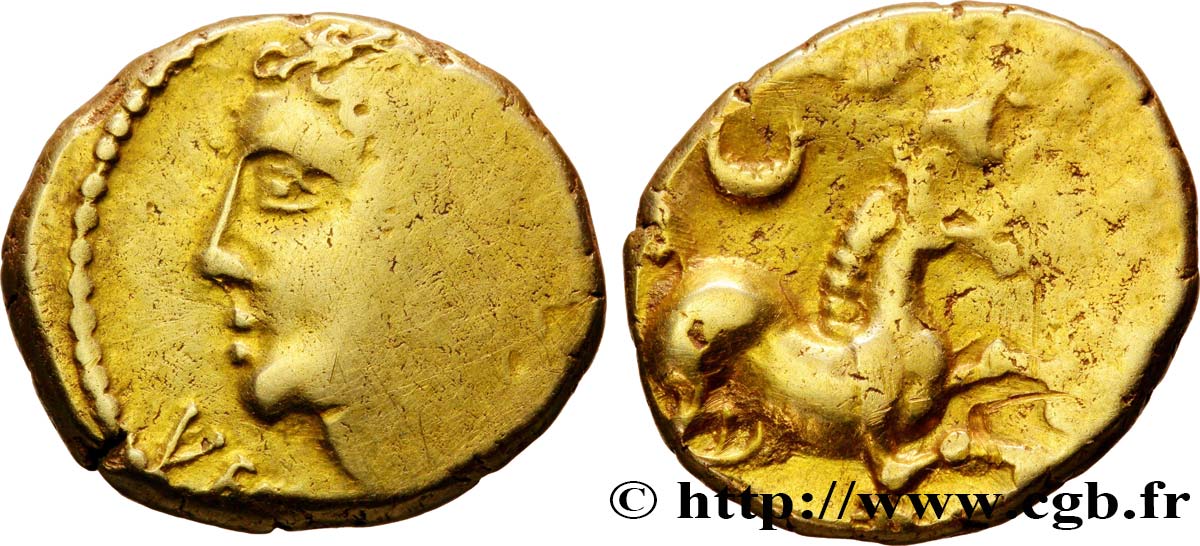
 Cообщить об ошибке
Cообщить об ошибке Распечатать страницу
Распечатать страницу Отправить мой выбор
Отправить мой выбор Задать вопрос
Задать вопрос Consign / sell
Consign / sell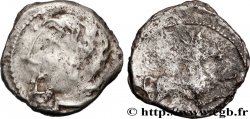
 Информация
Информация